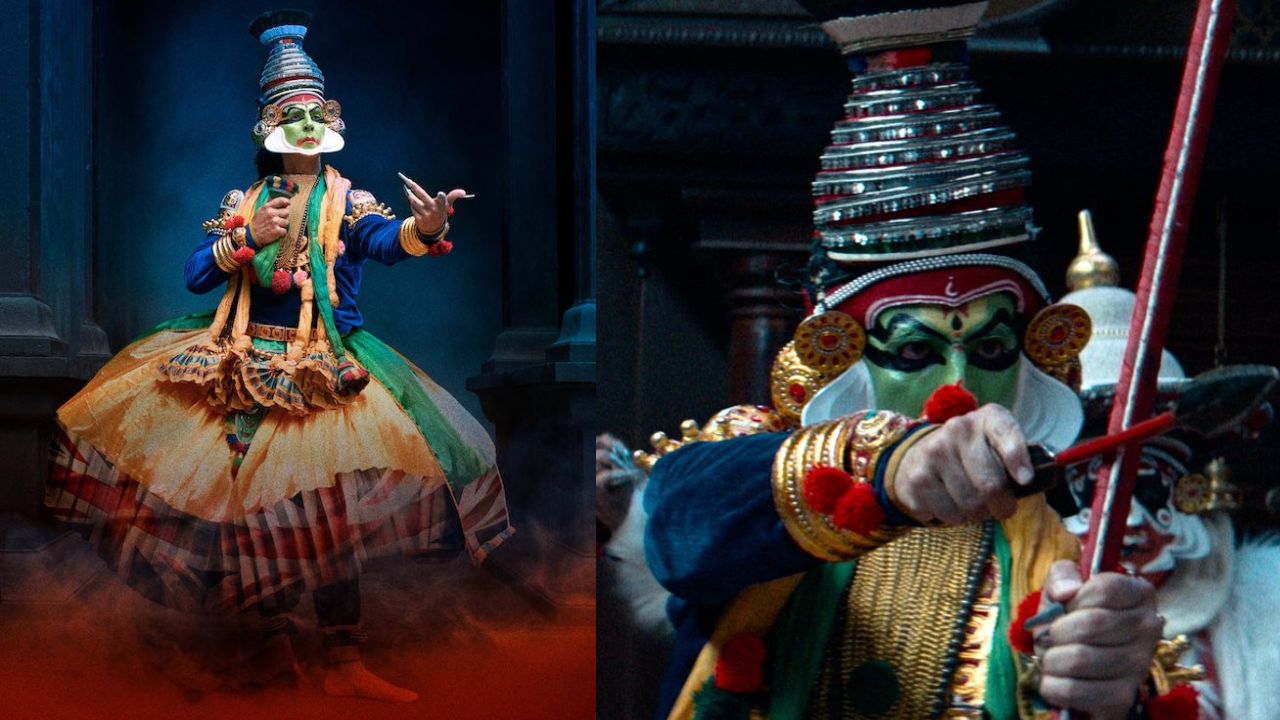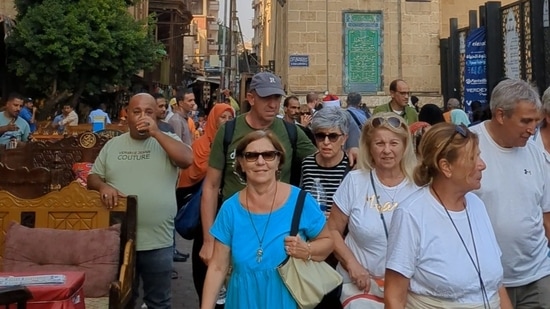
Shiq Shaq ‘Souq’: Journey through Egypt’s famous markets; Khan-el-Khalili and other must-see bazaars of Cairo
8 months ago | 123 Views
Beyond the ‘myth’ of Egypt, revealed in thick hardback Encyclopedias or Stephen Sommers’s The Mummy franchise (a dummies’ guide to Egypt, if you will), the heart of this Nile country lies in its souqs or bazaars. Today, as foreigners walk through its bustling markets, as they did many centuries ago, their eyes race to gather the mirage of antiques and paraphernalia that sprawls across a network of winding streets. Among such foreigners, Indian travellers are gaining notable numbers. According to a 2024 report from Atlys (an online visa application portal), 60% of solo outbound visa applications and 30% of group tour visa applications from India were for Cairo. What’s more, cross-cultural interests seem to be mutual. While Bollywood has always been popular across Egypt, blame SRK-Kajol for dancing beside the pyramids in Suraj Hua Maddham (KKKG, 2001), singer Abhijeet Bhattacharya recently had his bizarre moment of fame after going viral as the alleged doppelgänger, of former Egyptian President, Hosni Mubarak. However, what may seem bizarre is rather commonplace in the souqs. These markets are not just shopping centres; they are significant cultural experiences. Here’s looking at Egypt’s most renowned souq, Khan el-Khalili, and a few other must-visit markets in Cairo.
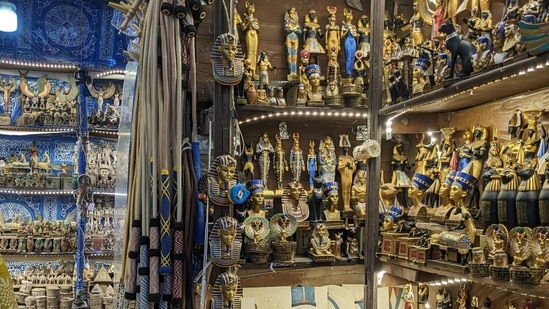
The call of Khan-el-Khalili
For those running short on self-esteem, a simple stroll through the narrow alleys of Khan el-Khalili is enough to make one feel like an icon. Seasoned salesmen zero in on a traveller’s nationality and customise a remark to attract their attention. For the French, a sprinkle of bonjour, along with the usual English, usually does the magic. But if you’re Indian, be prepared to have “Kareena Kapoor!” and “Aishwarya Rai!” thrown at you as if you were walking the runway while being cheered on by friends.
Located next to the Al-Husayn mosque, Khan el-Khalili is one of the most famous souqs in the world. A 15th-century merchant once described it as a “sumptuous palace, visited by most honourable merchants from Indies and Persia.” Having withstood a Napoleonic invasion, the marketplace remains a bustling spot where you can find rugs, perfumes and lanterns, much like in the 14th century. Alongside these traditional goods, there’s an eclectic mix of curiosities — from old trophies and wedding photos to broken watches, vintage flyers and even Pharaonic figurines that could be straight out of the tombs. Telling whether these items are genuine antiques or clever reproductions remains a challenge.
“You know the real deal,” the modern-day merchant flattered me as I picked up a figurine of Sekhmet, a lion-headed goddess whose myth is quite similar to that of Kali. Putting it over a light bulb, he proved how it was made of ‘real’ Egyptian alabaster, which bears a translucent quality. While we conversed, I couldn’t help but wonder how he sounded like a historian or a museum guide. We stood in his shop tucked away in one of the back alleys, across a domed arch from the Mamluk period, as he spoke of long-dead kings and the statues they left behind. Though long buried, I felt the presence of the bygone era as, around sunset, several cats lounged outside his shop near Bastet statues, the famous cat goddess of Egypt.
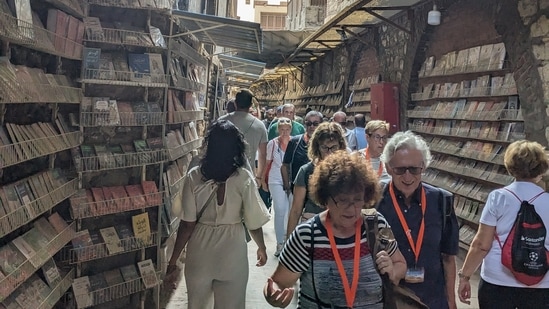
Underground bookstore of Coptic Cairo
What was once the fortress of Babylon in Roman Egypt and purportedly the temporary residence of the holy family, Coptic Cairo is a fascinating blend of Christian and Islamic architecture dating back to 525 BC. Set amid sepulchre-like medieval churches and synagogues, the books lane of the underground Coptic Cairo, known as Harit Al Kidees Girgis or the Alley of St. George, slithers along narrow sunken alleyways where sweat-drenched tourists sit down to take a sip of their lemonade. While the Al-Azbakiyya book market is the hotspot for bookworms in Cairo, there’s something distinctive about shopping for books after a day spent with frescoes of saints and angels, especially in the chancel of Saints Sergius and Bacchus Church (Abu Serga). While many of these churches have their own small collection of old manuscripts, these are usually not open to the public. However, outside of these, the Coptic Cairo bookstore almost functions like an open library and has a wide selection in a multitude of languages. Arranged genre by genre, the range is tempting, from New York Times bestsellers and history to children’s hieroglyphics-themed colouring books. Aside from books, one can also explore shops that sell unique artwork.
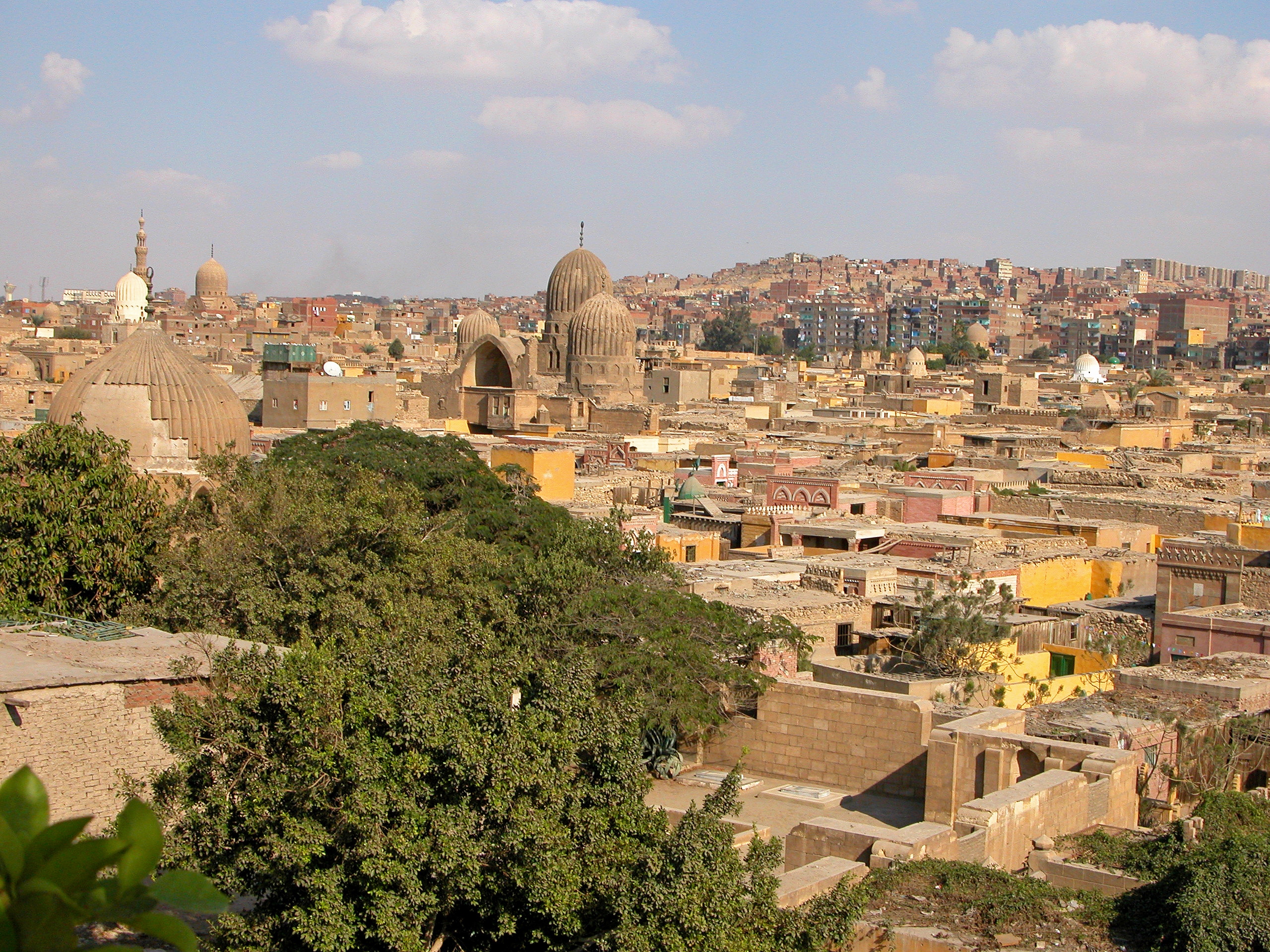
Fridays at Necropolis
Long spotlighted in ‘spooky’ vlogs and documentaries that voyeuristically inspect the conditions of the (financially struggling) living who have moved in with the dead, the City of the Dead or Cairo’s necropolis, located in Moqattam Hills, hosts one of the most (in)famous flea markets on Fridays. Not for the faint-hearted, especially if you abhor animal cruelty, there is only one agenda in the sellers’ minds - to sell anything and everything, whether functional or not, at the best price. “Bargaining is a national sport in Egypt,” my guide informed me, and evidently, the initial quoted price and the last price often differ by continent. If you do plan to thrift at this bazaar, you may want to dress down. The hawkers and vendors customise their prices according to the estimation of a customer’s status.
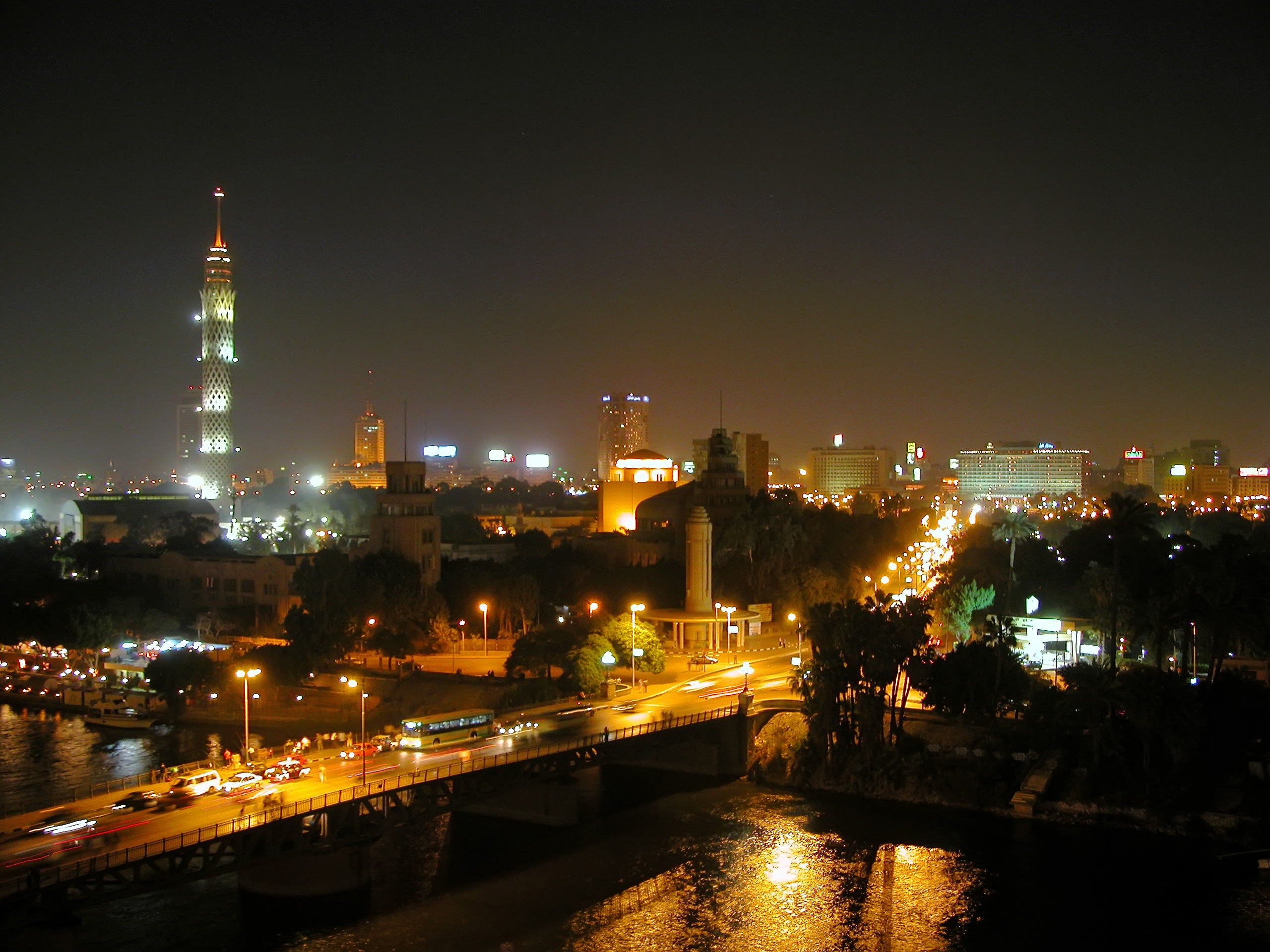
Arabian nights through a bird's eye
As I reached Sphinx International airport for my flight back to India, a red desert moon hung over the horizon. Wind picked up the pace, and what seemed like an impossible occurrence happened in the next moment — It started raining. Despite popular belief, it does rain in the Middle East. Onboard my connecting flight to Kuwait (I opted for Jazeera Airways), Egypt was lit up in dense yellow lights. Covered in dust and rain, it wore a brilliant hue of gold mixed with orange. At that instant, I couldn't help but imagine that I was looking at a premodern Egypt with lamp-lit merchant bazaars and mirthful inns visited by the legendary dancers. But as soon as we left the glitter of the civilization behind, a desolate dark desert stretched ahead. It made me realise how Misr, as Egypt was referred once, has always been an oasis for weary travellers wandering the desert.
Information:
Best months to travel: October to April are considered the best months to travel to Egypt
How to travel: Many direct and indirect flights connect Delhi with Cairo and Giza.
#












